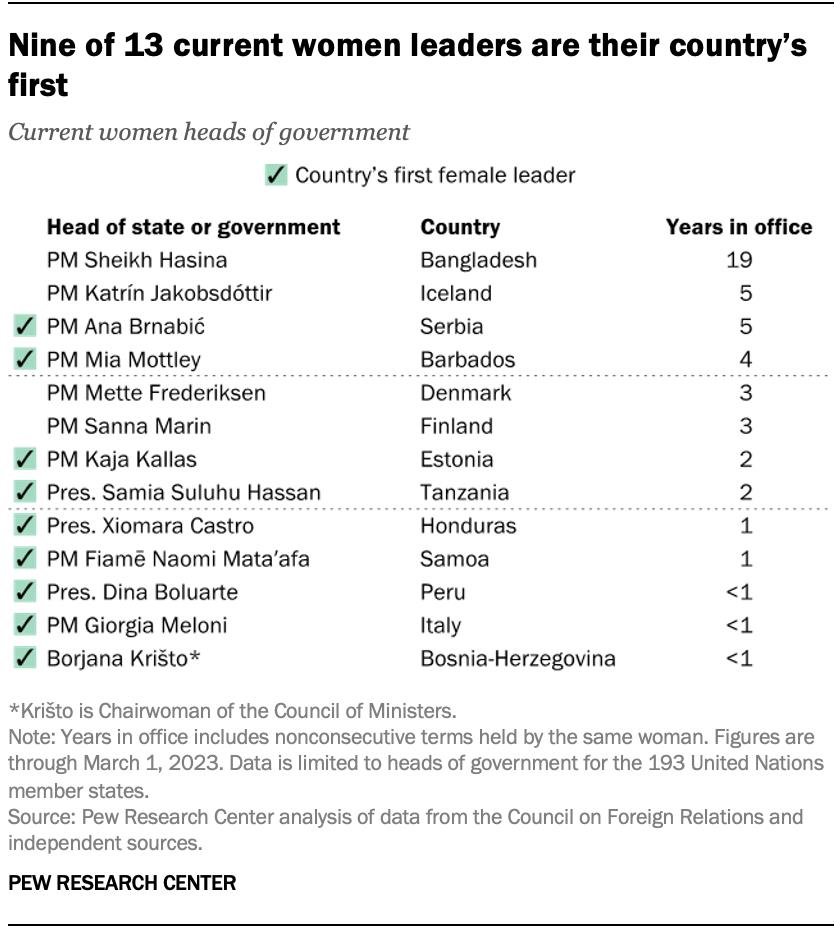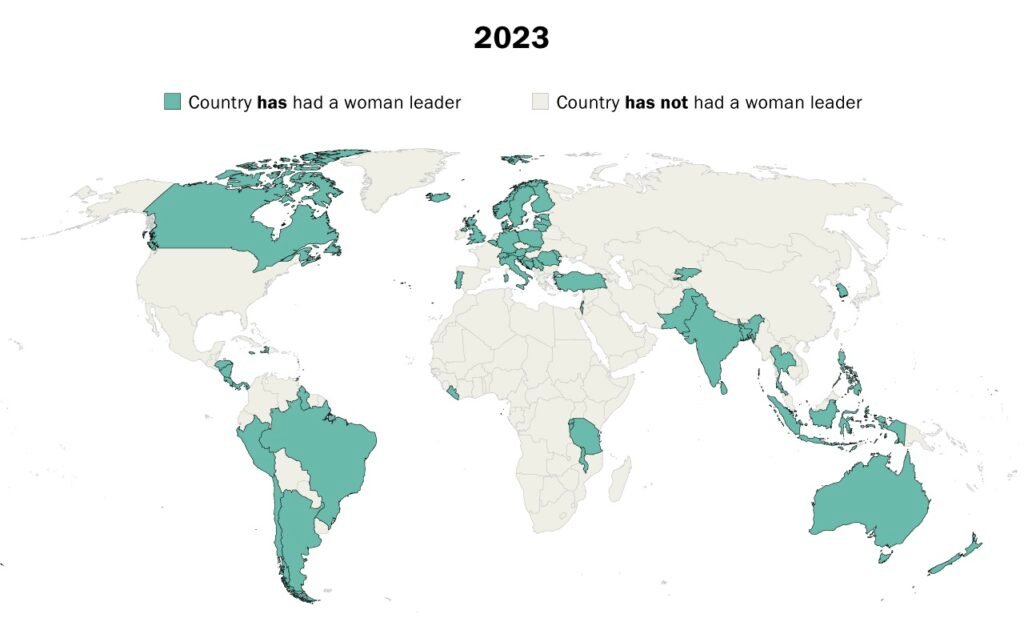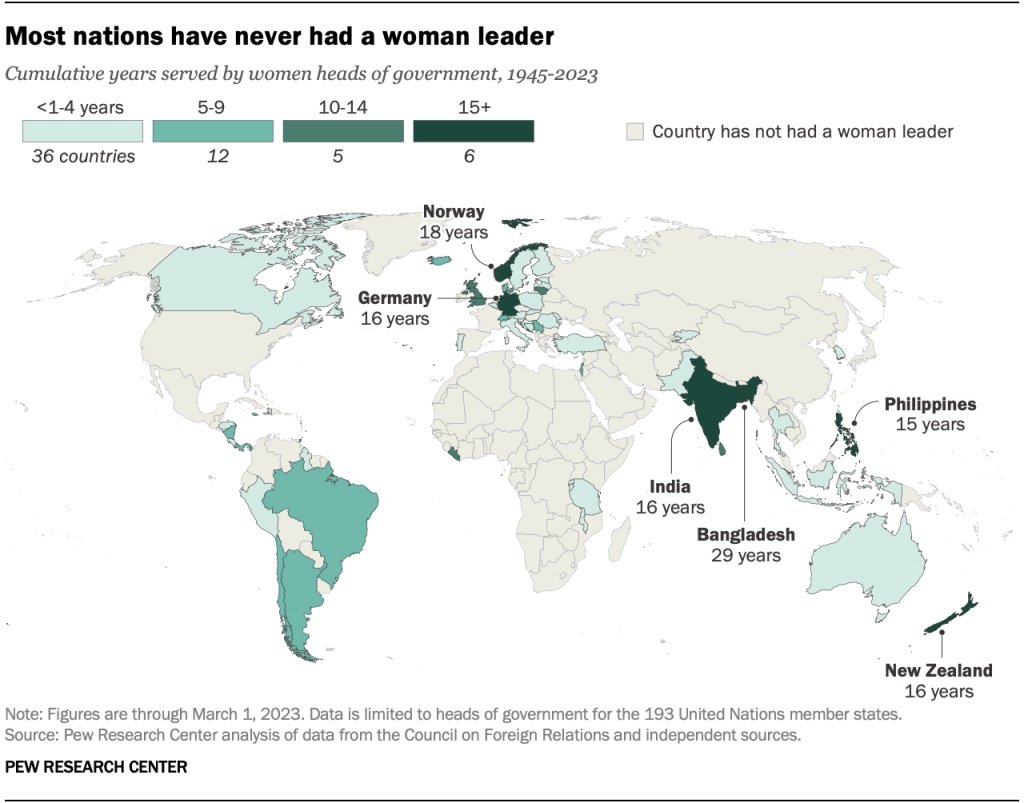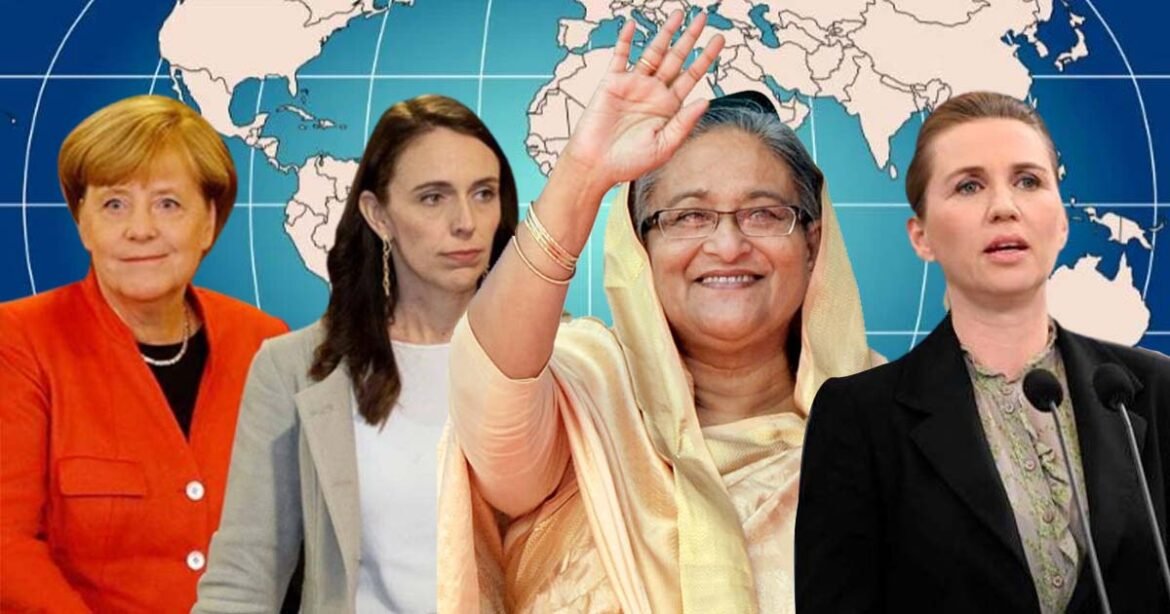While female leaders have continually proved their merit, just 13 of the 193 United Nations member states currently have female heads of government. Women leaders can bring diverse abilities, innovation, enthusiasm, manage more engaged organizations, and promote inclusivity, all of which contribute to improved performance.
There is abundant evidence that women contribute positively as a leader, whether in running businesses or countries. Even during the COVID-19 pandemic, countries led by women had “systematically and significantly better” outcomes, suffering on average half as many fatalities as countries led by men. Yet, according to a Pew Research Center estimate, fewer than one-third of UN countries have ever had a female head of state.
The first ever female heads of the government
In nine of the thirteen UN member states governed by women, the present leader is the nation’s first female head of government. This includes three women who assumed office over the past year: Dina Boluarte of Peru, Giorgia Meloni of Italy, and Borjana Krito of Bosnia-Herzegovina. Seven out of thirteen current female leaders are located in Europe.

59 countries have ever had a woman leader
59 UN member states have ever been led by a woman. The first country was India, where Indira Gandhi was prime minister for over a decade beginning in 1966.
Since 1990, the number of countries with female heads of government has gradually increased worldwide. In 2010, five nations — Australia, Costa Rica, Kyrgyzstan, Slovakia, and Trinidad & Tobago — elected their first female heads of state.
You can also read: Why is China Furious over Taiwan President’s Meeting with US Speaker McCarthy?
The list excludes two women leaders- Taiwan’s former President Tsai Ing-wen as it is not a UN member and Myanmar’s Aung San Suu Kyi; who was deposed in a military coup which UN does not recognize.

The increasing number of female heads of government
While the number of countries that have ever been led by a woman continues to increase, the number of women who are actively in power in any given year grows at a considerably slower rate.
In fact, no more than 18 countries have ever had female leaders in the same calendar year, but 2023 is very close to breaking that record.
This year, 15 countries have had female heads of state, including the 13 now in power, plus former presidents Jacinda Ardern of New Zealand, who resigned on January 25, and Natalia Gavrilița of Moldova, who resigned on February 16. Moreover, Finland’s prime minister, Sanna Marin will be resigning soon.

How many countries had multiple female heads of government?
Only 13 nations have ever had multiple female heads of state. In Switzerland, where seven elected members of the Federal Council rotate as president of the confederation for one-year terms, the greatest number of women have held positions of authority. This position has been held by five females, three of whom served a second term. Only six nations have had more than two female leaders.
Even when women have attained positions of power, their tenures have been brief. The average number of years that women have served as leaders of government is 2.1. There are a few notable outliers, however. Former German Chancellor Angela Merkel and former Dominican Prime Minister Dame Eugenia Charles are distinguished for their respective 16.1 and 14.9 years of consecutive leadership. HPM Sheikh Hasina served for a total of 19.1 years during her two nonconsecutive stints as prime minister of Bangladesh.

In contrast, the terms of Liz Truss as British prime minister for 49 days in 2022 and Anneli Jaatteenmaki as Finnish prime minister for 68 days in 2003 stand out as the shortest.
Bangladesh has experienced the longest stretch (29 years) of female national leadership since 1945. Norway, New Zealand, Germany, India, and the Philippines were all led for at least 15 years by women. Only five other nations have had female leadership for at least a decade.
Source: Pew Research Center


